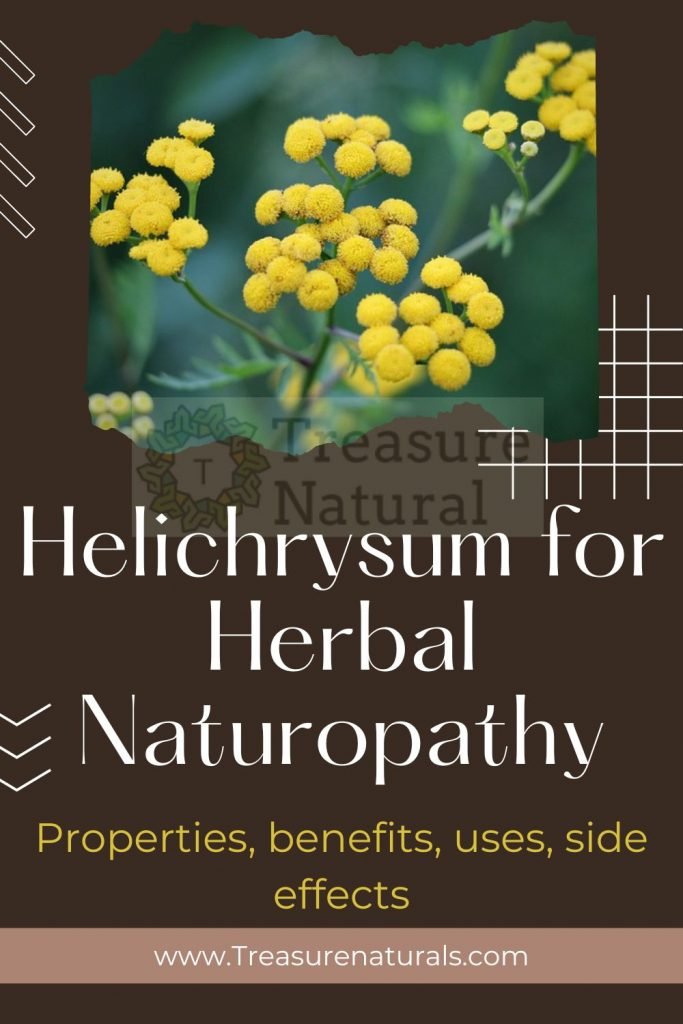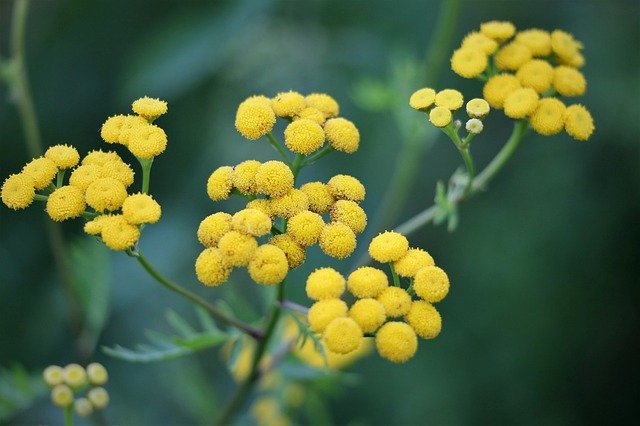
Helichrysum is a spontaneous plant known for its anti-inflammatory and anti-allergic properties, useful in diseases of the airways and skin.
The helichrysum (Helichrysum italicum) is a very common spontaneous plant throughout the Metirannean basin. It belongs to the Asteraceae family and is known for its antiallergic and anti-inflammatory properties,useful for treating respiratory and skin disorders.
Let’s find out better.
Properties of helichrysum
Helichrysum is a medicinal plantwhose flowering tops are used rich in essential oil, flavonoids and organic acids that give the plant numerous properties.
The leaves and flower of helichrysum are used in cooking as flavorings, and in ebroristeria in the form of herbal tea or extract for their action:
- Anti-inflammatory;
- antiallergic;
- as well as for the expectorant, analgesic, antibacterial and healing properties.
Another important property of the external use of helichrysum is astringent, anti-edema, analgesic, as it counteracts inflammation and pain, tones the venous walls, reduces effusions and dilation of the veins.
Benefits of helichrysum
Due to its properties, helichrysum is used in the treatment of allergies affecting the airways and skin tissues. On the respiratory system, helichrysum promotes the elimination of excess bronchial phlegm, attenuates asthma spasms and inflammations of allergic origin of the nasal mucosa.
For internal use the plant is therefore used in the treatment of allergy, in the presence of rhinitis, conjunctivitis and allergic blepharitis, cough, acute and chronic bronchitis.
For topical use, however, the plant represents the specific remedy to soothe and flame the skin in case of psoriasis, herpes, eczema, burns and sun rashes, and to calm the irritations of sensitive skin, thanks to its decongestant and protective action.
Topical preparations generally contain helichrysum essential oil, which can also be used to prepare massage oils.
Finally, helichrysum is an excellent remedy in case of hemorrhoids, arthritis and acute rheumatic forms.
How to use
Indoor use
- Infusion: 1 tablespoon of flowering tops of helichrysum, 1 cup of water
Helichrysum herbal tea is prepared by placing the plant in boiling water and immediately turning off the heat. After that it is covered and left to infuse for 10 minutes. Finally, the infusion is filtered and consima. You can drink up to 4 cups a day between meals, for example against coughing and asthmatic manifestations.
- Mother tincture of helichrysum: 35 drops in a little water three times a day before meals.
External use
- Decoction: 1 tablespoon of helichrysum in a cup of water.
Pour the chopped flowering tops into cold water, turn on the fire and bring to a boil. Boil a few more minutes and turn off the heat. Cover and leave to infuse for 10 minutes. Strain the infusion and apply in compresses on the skin to relieve skin inflammation, dermatitis, psoriasis and eczema.
The compresses with helichrysum are also excellent for reactivating blood circulation so very effective in the case of cold hands and feet and chilblains.
- Helichrysum Oil
100 grams of dried helichrysum flowers in extra virgin olive oil.
Place the helichrysum in a glass jar equipped with an airtight lid, cover the flowers with olive oil and close the jar. Leave to macerate for 40 days, shaking the jar at least once a day.
After the maceration time, strain with a colander and gauze, squeezing the flowers well to recover all the oil.
Transfer the oleolite to a dark glass bottle to be stored in a cool place, away from heat
sources. The helichrysum oleolite helps, as well as in case of irritation of sensitive skin, also for rheumatic pains and massages useful to reactivate the circulation.
Effects
For helichrysum there are no known relevant side effects. The use of products containing helichrysum can cause reactions in people allergic to the plant or one of its components.
Contraindications of helichrysum
Helichrysum is considered a safe remedy. Itsuse is not recommended only in pregnancy, lactation and before a surgical operation.
Description of the plant
The helichrysum plant is a perennial suffresser 25-40 centimeters high, with compact posture and woody stems covered with a thick whitish down. Helichrysum leaves exude a characteristic aroma similar to curry or licorice, so much so that often this plant is found on sale under the name of curry plant or helichrysum licorice. The leaves, gray / ashy are dense, linear and pubescent on both sides.
The flowers are yellow flower heads, mainly tubular, gathered in dense corymbs of 25-35 inflorescences. After floweringdevelops the fruit, an oval achene equipped with pappus.
The habitat of helichrysum
Characteristic plant of the low Mediterranean scrub, widespread in uncultivated and stony, sunny and arid places. The helichrysum grows for example very well in Sardinia: the Sardinian helichrysum is known as “gold of Sardinia”.
Cultivation
Helichrysum is a rustic and resistant plant, simple to grow in pots or in open ground.
Helichrysum plants are easily found in nurseries; once purchased, the helichrysum should be placed in a sunny position.
If it is grown in pots, it will need regular fertilizing in spring and summer, while in open ground it has no special needs.
Irrigation is necessary especially for young plants, paying attention to water stagnation.
Helichrysum is not afraid of drought and high temperatures, but suffers frost; in winter it should be hospitalized inside or protected from the cold in regions where temperatures are particularly cold.
Background

Helichrysum is a denomination introduced at the beginning of the ‘700 in allusion to the rayed appearance of the flower heads of this plant and their golden color. The name in fact derives from the Greek helios, “sun” and chrysos, “gold“, and refers precisely to the shape and the very bright golden yellow of its flowers and to the fact that the plant grows in very sunny and warm places.
The helichrysum, whose family includes numerous species, is also known by the name of “ever-living“, probably because it retains the color of the flowers for a very long time together with its perfume, the latter very similar to licorice or curry.






